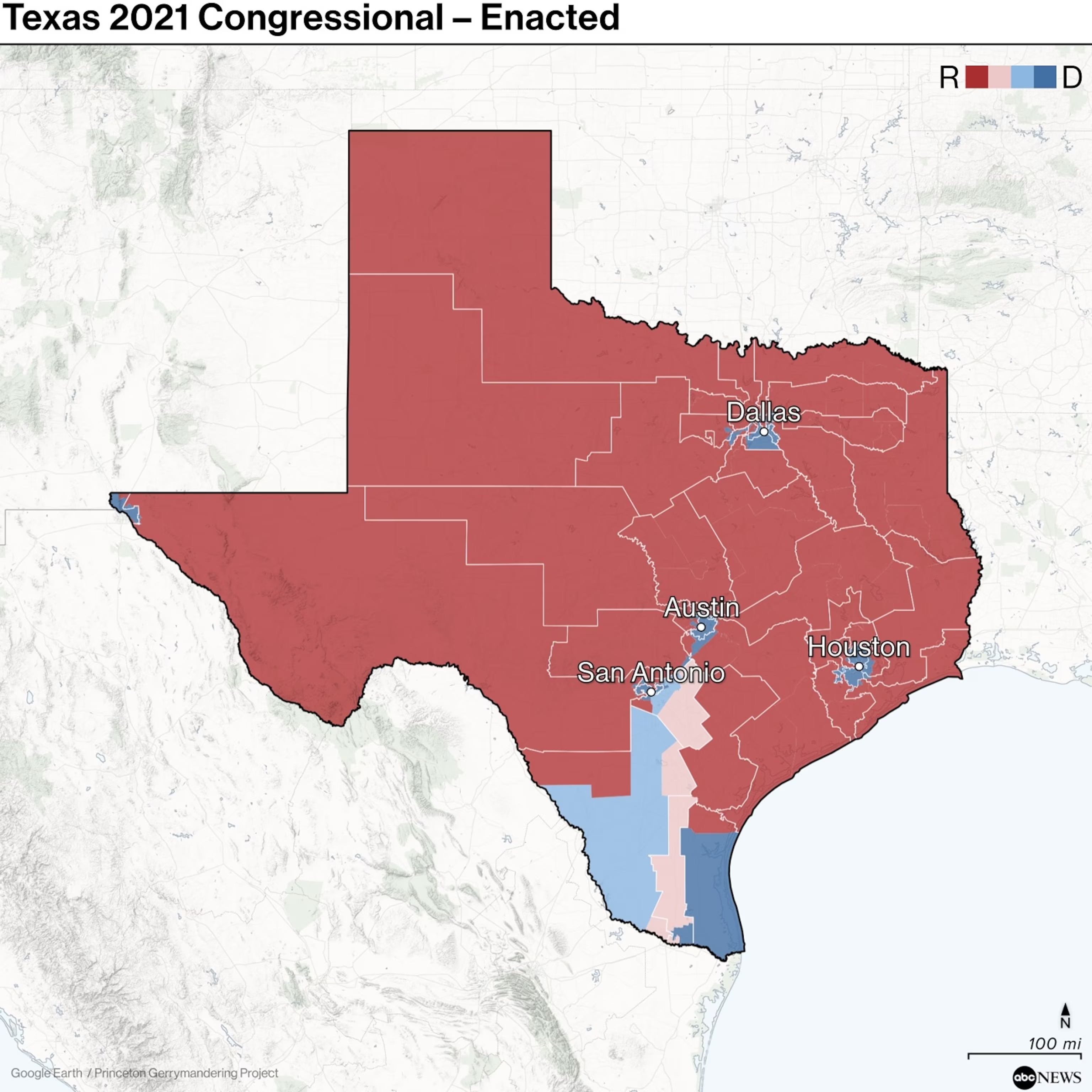
3:35Demonstrators rallied against the newly proposed redistricting law during an urgent march and picket outside the Governor’s Mansion on August 04, 2025, in Austin, Texas. Brandon Bell/Getty Images
The ongoing struggle over redistricting in Texas has highlighted the persistent controversy surrounding gerrymandering and its enduring implications for voters.
Sam Wang, the founding director of the Electoral Innovation Lab and the mind behind the Gerrymandering Project, a research initiative aimed at producing the most equitable district maps, informed ABC News that leaders from both political parties have manipulated election boundaries to favor their own voting bases.

Demonstrators rallied against the newly proposed redistricting law during an urgent march and picket outside the Governor’s Mansion on August 04, 2025, in Austin, Texas. Brandon Bell/Getty Images
In the past two decades, advancements in computer algorithms have made gerrymandering efforts increasingly blatant, as entire counties have been meticulously divided, resulting in districts with bizarre shapes, he noted.
"Gerrymandering epitomizes partisanship taken to an extreme, overshadowing all other considerations," Wang remarked.
The term was first introduced in 1812 when Massachusetts Governor Elbridge Gerry enacted a bill that revised the state’s congressional maps to favor the Democratic-Republican party. Typically, maps are redrawn at the beginning of each decade to account for population shifts from the latest census.
Kareem Crayton, the vice president of the Brennan Center for Justice’s Washington, D.C., office, who has dedicated years to researching redistricting, shared with ABC News that the redistricting initiatives since the 2000s have perpetuated a recurring cycle of gerrymandering, particularly in the Southern states.
"States like Florida and Texas exhibit some of the most glaring instances of gerrymandering," he stated.
However, Crayton also emphasized that Democratic-dominated states, such as Illinois, have also crafted their own maps that distort districts in their favor, leading to an unending cycle.
"All of these states are watching one another like ‘The Good, the Bad and the Ugly,’ trying to see who will make the first move," he remarked, alluding to the Western film. "There is no authority in place to indicate that this is detrimental to everyone."
While both Republican and Democratic leaders in these states maintain that they are redrawing maps to better reflect their communities, Wang asserted that the mathematics and geography do not support their claims.
Wang’s lab developed a mathematical algorithm that generates district maps based on essential demographic factors. Racial demographics from the Census, environmental and geographical data from local sources, and other public records are utilized to produce district maps free from political bias. These maps are then juxtaposed with the currently existing district maps.
"This reveals what a neutral party would do," he clarified. "We have leveraged computer simulations to ascertain what would be impartial."
Texas ranks among the 15 states that received an F grade according to the Gerrymander Project’s criteria.

Texas congressional districtingGoogle Earth, Princeton Gerrymandering Project
Despite the fact that the state legislature and congressional delegation are predominantly Republican, the existing districting map of Texas is structured in a manner that provides the GOP with an edge, as per the project. The analysis indicates that the redistricting undermines a potentially competitive vote.
For instance, Travis County, which encompasses the city of Austin that tends to vote Democratic, is divided into five congressional districts. By excluding Austin from surrounding suburban areas, the congressional district is likely to favor Republican candidates, according to the analysis.
Sourse: abcnews.go.com






